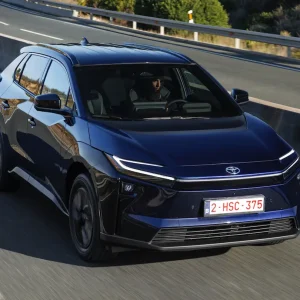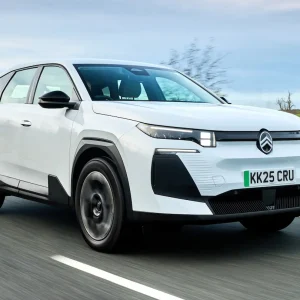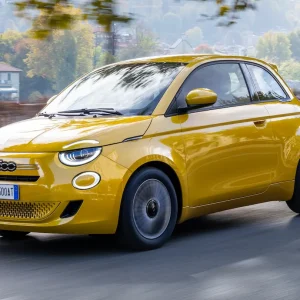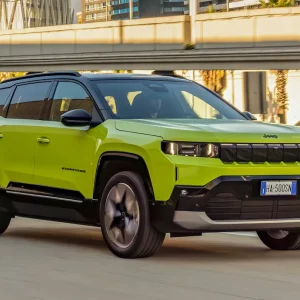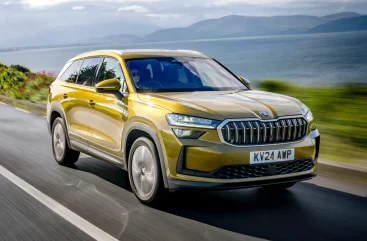
The first-generation Kodiaq was a landmark car for Skoda. This was an SUV that could be bought with heart as well as head, with its stylish exterior styling, keen levels of standard equipment, a good choice of diesel and petrol engines, family seven-seat practicality, and all at affordable prices.
Seven years of fleet and customer recognition followed, and Skoda sold an incredible 866,000 of them – with 55,000 of those going to the UK alone, making us the second most popular market in Europe. Now, the Kodiaq is back in second-generation form, boasting more space, efficiency, and luxury.
From the front, there’s a large new version of the octagonal family grille finished in dark chrome, plus the large LED Matrix headlamps, and a wide lower intake. The side design, with its SUV estate styling, is marked out by the squared-off wheel arches, silver rear roof pillars, and new alloy wheel designs. At the back, the Kodiaq is identified by its three-part rear lights, and its large and wide tailgate.
Interior space
The result of the Kodiaq growing by 61 millimetres in length is obvious – a more spacious interior. Let’s start with the boot, which now boasts 340 litres (80 litres more than before), or 900 litres with the third-row seats folded. It is not just the boot that marks out the new Kodiaq, as headroom in the third row of seats has been increased by 15mm – although they are still best suited to kids.
Move to the second row of seats, and there is now almost limo-like legroom. Choose the incoming plug-in hybrid version, which fleets probably will, and it’s five seats only, and 745 litres of space thanks to the battery being located under the floor.
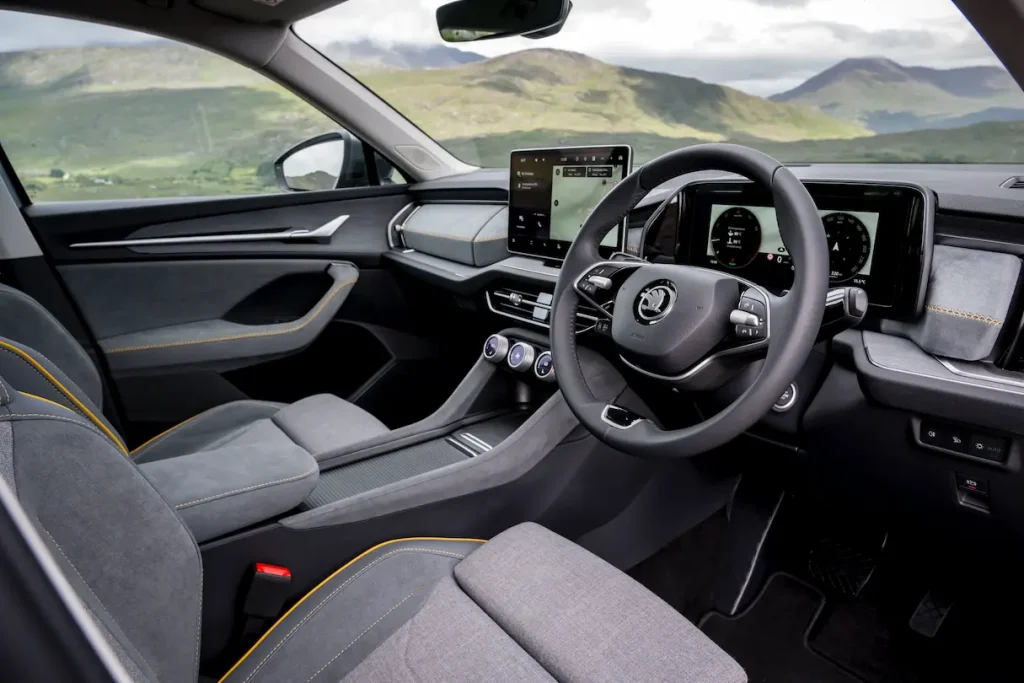
There is no issue with the driving position and space either – like the Superb, the quality feel of the materials has improved, and feels more premium. Dashboard highlights are the latest 13in touchscreen, the extra leather on the top of the dash (where fitted) , plus the clever, multi-function rotary dials below it. These dials work brilliantly, but we still have issues with their chrome-plated plastic finish.
All Kodiaqs are auto-only now, with the gear selector on the steering column, the same as fitted to the Superb, freeing up space in the centre console.
Engines and drive
We got to try three of the engines that will be offered in the Kodiaq. This included 148hp and 191hp versions of the 2.0-litre TDI diesel, the latter with four-wheel drive. Although both are grumbly at idle and load, they feel willing enough (especially the most powerful version).
The 148hp, 1.5 TSi petrol, is the most refined and responsive, and our favourite of the three we drove. However, the incoming plug-in hybrid version is sure to be the most popular with fleets and boasts a 75-mile electric-only range, with the ability to be charged from 10-80% in around two and half hours with an 11kW charger.
On the road, the Kodiaq with 18in wheels drove the best in our opinion. Happiest seemed the entry-level petrol – which coincidentally was also the lightest. The least comfortable was the most powerful all-wheel drive version, where the extra weight of the four-wheel drive system gave a harder, uncomfortable edge to the ride.
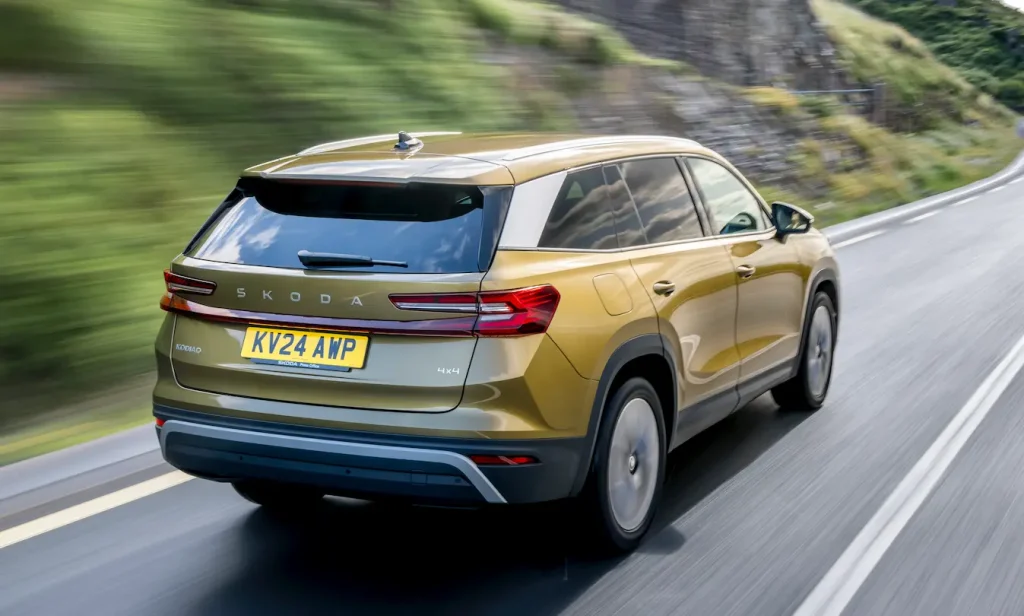
Whichever Kodiaq you choose, there are no fireworks to the drive, but they all impress with their practicality, interior quality, and the ride in general is impressively refined. This Skoda must be the best ICE-powered seven-seat SUV of its type.
Positive: Sharper interior and exterior styling, quality feel to the interior with clever switchgear, more rear and boot space
Negative: Some interior finishes not as impressive as the design, PHEV only a five-seater, starts to get expensive further up the range
Standard equipment: 18in Mazeno alloys, 13in central infotainment display with integrated sat-nav, 10.25in Virtual Cockpit, fabric upholstery and gloss black finishes.
Engines: Diesel: 148hp 2.0, 191hp 2.0
Petrol: 148hp 1.5
PHEV: 202hp 1.5
Equipment grades: SE, SE L
Transmission: Seven-speed auto
| Model | Skoda Kodiaq 1.5 TSi E-TEC SE L |
| P11D | £39,890 |
| Residual value | 50% |
| Depreciation | £19,705 |
| Fuel | £8,594 |
| Service, maintenance and repair | £2,514 |
| Cost per mile | 51.35p |
| Fuel consumption | 44.4mpg |
| CO2 (BIK%) | 145g/km (34%) |
| BIK 20/40% a month | £226/£452 |
| Luggage capacity | 340 litres |
| Engine size/power | 1,498cc/148hp |
| Score | 8/10 |

